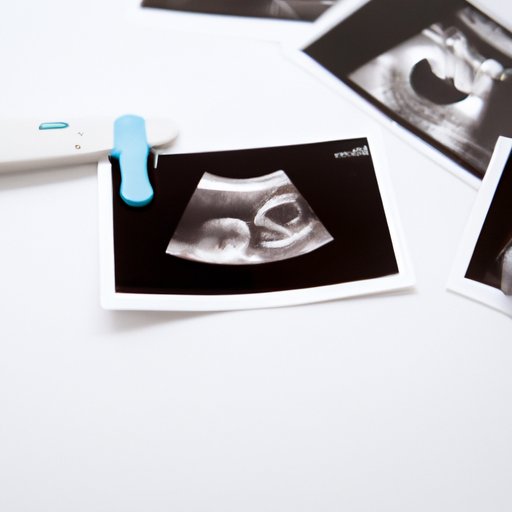
I. Introduction
As soon as many parents find out they are expecting, they begin to look forward to knowing the gender of their baby. Some prefer to wait and be surprised at birth, while others choose to determine gender early. In our article, we’ll explore the different ways of finding out the gender of the baby, the pros and cons of doing so, as well as how parents can navigate the emotional implications of this discovery.
II. Ask a Medical Professional
While many tests claim to accurately reveal the gender, consulting a medical professional is the best way to determine the earliest possible time to discover your baby’s gender. Ultrasounds are the most common method of determining fetal gender and can be done between 18 and 20 weeks of pregnancy. Amniocentesis and chorionic villus sampling are invasive tests that can also determine gender, but they are usually done to detect any chromosomal abnormalities. Non-invasive prenatal testing (NIPT) is a blood test that can detect genetic information from the placenta as early as 10 weeks. Keep in mind that the accuracy of any test can still be affected by certain factors such as the position of the baby, the skill level of the technician, and the exact timing of the test.
III. Research on Testing Methods
There are several methods available for determining the gender of an unborn baby. Methods such as the Ramzi Method, nub theory, and skull theory use early ultrasound photos and position of the placenta to predict the gender. While these methods can be fun to try, they are not always accurate and should not be depended on for complete reliability. The most reliable way to determine gender remains through medical tests. Amniocentesis and CVS are invasive tests and have a small risk of miscarriage. Non-invasive Prenatal Testing (NIPT) is a safe, non-invasive option and has an accuracy rate of up to 99.9%.
IV. Interviews with Parents
Some parents prefer to wait to be surprised, while others are eager to find out the gender as soon as possible. Some have created various techniques to guess their baby’s gender, including old wives’ tales like craving sweets over sour foods or being able to accurately guess based on the position of the baby bump. Some parents also were excited to plan out the baby’s nursery and aspect of baby showers once they knew the gender. Interviewing veteran parents and listening to their experience and advice can offer insight into the multiple perspectives of finding out the baby’s sex.
V. Pros and Cons of Finding Out the Baby’s Gender Early On
Many couples decide to find out the gender before birth to prepare for their child. Knowing the gender gives parents ample time to plan for the future. Parents can also build an emotional bond with their child when using their names and pronouns. Some argue that finding out the gender can limit the baby’s identity and can make some act differently based on the sex. Ultimately, it falls to personal choice whether or not to find out the gender early on.
VI. Step-by-step guide to a Gender Reveal
Expectant parents have multiple methods to reveal the gender of their child to friends and family. This can include using balloons, pyrotechnics, piñatas, or cakes. Once your doctor determines the sex, whether through an ultrasound or a blood test, the excitement begins. With many creative ideas on social media platforms, it is up to the parents to choose the most fun way to express their exciting news.
VII. Personal Stories
Real parents have shared their accounts on how they found out the gender of their child. Some shared their anxious waits, then relayed their emotional responses of elation or disappointment. Some spoke about how they found out their baby’s sex while others described how they surprised their friends and families.
VIII. Emotional Impact
Receiving confirmation of your baby’s gender may come with a range of emotions. It may help some parents prepare for their future while creating a unique, personalized bond with the baby. Others may feel disappointment or anxiety, depending on what they desired. It is entirely normal to feel a mixed range of emotions, and it may be helpful to share your feelings with your partner or a support group.
IX. Conclusion
Whether you decide to wait until delivery or find out the gender early, it’s essential to do what feels right and best for you and your partner. Medical testing is the most reliable method, but there are fun methods to try. There are pros and cons to both, but every parent should choose what is best for their family. Finally, it is normal to feel a complex set of emotions, and it’s important to have a supportive community to turn to. Remember to enjoy every moment of journeying towards being a new parent.





